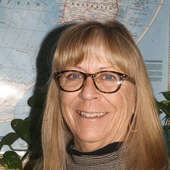- Research tips and McCook Brick Company- solid as a brick (12/16/24)
- Big Give appreciation and some railroad characters (11/15/24)
- George Randel becomes a landowner, gets married, and takes in a Buffalo Bill show (9/20/24)
- The memoirs of George F. Randel, early settler of Red Willow County (9/12/24)
- Vietnam War Memorial honors Nebraskans who served (6/13/24)
- McCook business promotions - just prior to 1893 stock market crash (5/30/24)
- Shall we dance? Meet you at the Gayway (12/8/23)
DNA information and fourth cousins
Friday, February 8, 2019
All this DNA information that people are gathering at times can be more confusing than helpful. How do you get to be fourth cousins, let alone cousins once removed? I must continually go back to a chart to figure it out, so maybe this column will help you with those questions!
First cousins are quite obviously the children of either your father or motherís brothers and sisters. This I know, and I know all my first cousins since we grew up invading our grandmothersí homes like a herd of elephants during holidays and summer vacations. What does become confusing when dealing with my family is that we younger first cousins had first cousins that were married and having children at the same time our parents were birthing us! Consequently, we have first cousins, once removed, that are in our age group. So that is the beginning of this explanation. Children of your first cousins are first cousins, once removed! Their children are first cousins, twice removed. Double first cousins happen when a pair of brothers marries a pair of sisters. That means that their children share both sets of grandparents.
Second cousins share at least one great grandparent. My children and my first cousinsí children are second cousins. This continues as third cousins share at least one great-great grandparent, fourth cousins share at least one great-great-great grandparent. What you see in the DNA results doesnít usually take you past a certain fourth cousin relationship though it is possible to have results that do.
The problem with DNA is that none of us, except identical twins, inherit the same mix of DNA from both parents. Clear as mud? Well, we only inherit 50% of our DNA from each parent and that mix can differ for each child and each subsequent generation dilutes that mix again as additional DNA is brought into the chain.
By the time you get to fourth cousins, the percentage of match is going to vary greatly. As an example, my Ancestry.com test matched me with two fourth cousins through my Davison line which is my motherís paternal line. Through conversations with both, we established that George Davison, my great-great grandfather, and their great-great grandfathers were brothers which meant we shared that triple great grandfather status but, and this is important to note, in their DNA results, they did not match up to each other because the percentage between the two of them, the mix they received down the line of births, is not as high as the percentage they shared with me.
What would make a person interested in fourth cousins they have never met? It is a distant relationship buy in my case, both of my fourth cousins still live in the geographical area that my grandfatherís father left to homestead in Nebraska and one is a dedicated, constantly searching genealogist. Since we have established this relationship, he has passed on a large amount of information concerning this Scotch-Irish line of mine; in fact, so much information that I havenít had a chance to even dissimilate all of it. If you are fortunate enough to make contacts like that, you will uncover information important to you.
SWNGS library is open on Tuesdays and Thursdays from 1-4 PM, weather permitting. We are located at 110 West C, Suite M-3 and there is an elevator available to those who need assistance.

